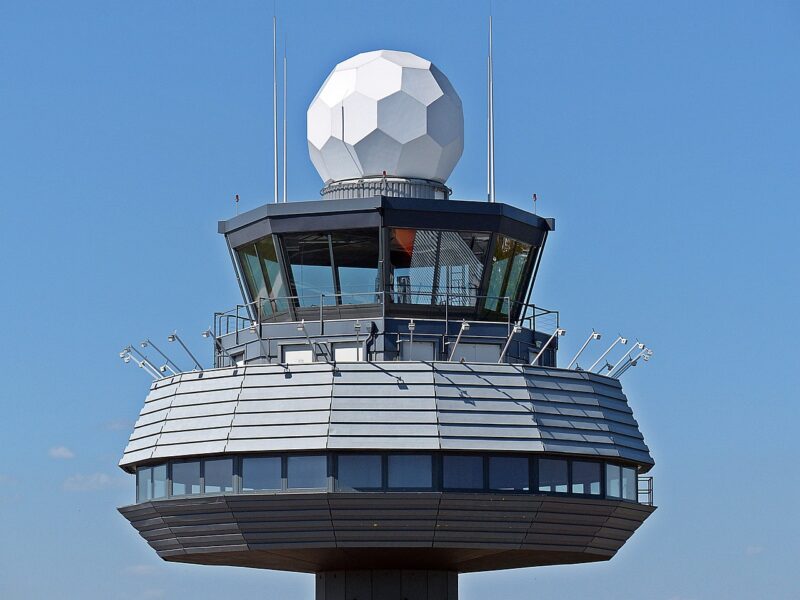Inside Air Traffic Control: How Controllers Keep Our Skies Safe
November 14, 2024

Air travel has become an integral part of modern life, allowing us to traverse vast distances in a remarkably short time. But behind every takeoff and landing lies a complex and highly coordinated system known as air traffic control (ATC). This article aims to shed light on the unsung heroes of aviation—the air traffic controllers. These skilled professionals ensure the safety of our skies, managing the intricate ballet of aircraft movement both in the air and on the ground.
1. What is Air Traffic Control?
Air traffic control is a service provided to manage the movement of aircraft on the ground and in the air, ensuring safety and efficiency. Using a combination of radar, visual observations, and communication systems, controllers guide pilots through various stages of flight, from departure to arrival. This involves maintaining safe distances between aircraft to prevent collisions and providing guidance during adverse weather conditions or emergencies.
ATC is divided into several sectors, each responsible for a specific geographical area. These sectors operate within three core services: terminal, en-route, and ground control. Each plays a unique role in monitoring and guiding aircraft through their journey.
2. The Structure of Air Traffic Control
To better understand how air traffic control functions, it’s vital to know its structure. ATC is typically organized as follows:
- Terminal Control: This involves managing aircraft as they approach and depart from airports, ensuring smooth transitions during takeoffs and landings. Terminal controllers handle a high volume of flights in congested airspace, requiring precise coordination.
- En-route Control: These controllers manage aircraft flying at cruising altitude. They ensure that planes maintain safe separation from each other as they travel across expansive airspace.
- Ground Control: These controllers oversee the movement of aircraft on the airport surface, including taxiing. Ground controllers provide instructions to pilots on where to taxi, helping them navigate safely between runways and terminals. Maintaining safety in this aspect is crucial, particularly in busy airports where the risk of collisions on the ground is significant.
Understanding these components helps highlight the complexity of air traffic control and the necessity for teamwork and coordination among controllers.
3. Daily Operations in Air Traffic Control
The operations in an air traffic control tower are fast-paced and demanding. Controllers work in teams, often collaborating with each other and pilots to ensure safe flights. Here’s an inside look at their daily routines:
- Pre-Shift Briefing: Controllers begin by reviewing the day’s flight schedule, discussing any expected changes in weather, and coordinating among team members about their sectors. This helps establish a unified understanding of upcoming operations.
- Monitoring Flights: During their shifts, controllers utilize radar technologies to monitor the movement of aircraft. They track altitudes, speeds, and routes, making real-time adjustments as needed to maintain safe distances between planes.
- Communication with Pilots: Controllers maintain constant communication with pilots via radio, providing instructions such as altitude changes, course adjustments, and landing permissions. Clear communication is essential, as it ensures both parties are informed and aware of each other’s actions.
- Crisis Management: Controllers must be prepared for any emergencies. Whether it’s responding to a nonearning fuel situation, bad weather, or technical issues, readiness to manage crises is part of their daily responsibility. Controllers undergo extensive training to handle such situations, ensuring the safety of all on board.
The high-stakes environment of an ATC facility means that controllers must be highly trained, alert, and capable of making rapid decisions under pressure.
4. The Technology Behind Air Traffic Control
To effectively manage air traffic, controllers rely on advanced technology. Some key tools include:
- Radar Systems: Radar is crucial for tracking aircraft positions in real-time. This system sends signals to aircraft, which reflect the signals back, allowing the controller to accurately monitor their locations and movements.
- Automated Systems: The incorporation of automated systems has improved efficiency. Services like Automatic Dependent Surveillance–Broadcast (ADS–B) provide real-time data about aircraft positions to controllers, facilitating better decision-making.
- Communication Systems: Reliable communication is crucial. Controllers use high-frequency radios to maintain constant contact with pilots, regardless of their flying altitude or location. The introduction of satellite communication systems has further enhanced the communication capabilities of ATC.
- Data Processing Tools: Software programs analyze data received through radar and other systems, helping controllers to predict potential conflicts and make rapid adjustments to flight paths.
These technological advancements enable controllers to perform their duties with increased accuracy and safety, essential in today’s crowded airspace.
5. Training to Become an Air Traffic Controller
Due to the critical nature of their work, becoming an air traffic controller requires extensive training. This process typically includes:
- Education: Most controllers hold a degree in aviation or a related field. Some countries offer specialized training programs to prepare candidates for ATC roles.
- Certification and Training Programs: After educational training, prospective controllers must undergo rigorous certification. In the United States, the FAA (Federal Aviation Administration) requires aspiring controllers to complete specific training before earning their licenses.
- On-the-Job Training: New controllers typically undergo extensive on-the-job training under the guidance of experienced controllers. This phase allows them to gain practical experience in dealing with real-time air traffic scenarios.
- Continuous Training and Education: Even after becoming certified, controllers must participate in ongoing training to keep their skills sharp and stay updated on new technologies and procedures.
This stringent training ensures that the controllers are well-equipped to handle the demands of their roles effectively.
6. Challenges Faced by Air Traffic Controllers
Despite the importance of their role, air traffic controllers face numerous challenges such as:
- High Levels of Stress: The demands of the job can be mentally and emotionally taxing. Controllers must maintain focus and make informed decisions in high-pressure situations.
- Work Hours: ATC often operates 24/7, requiring controllers to work irregular hours, including nights and weekends, which can disrupt personal life and lead to fatigue.
- Budget Constraints: Funding challenges can affect staffing levels, leading to increased workload for existing controllers, which heightens pressure on the workforce.
Acknowledging and addressing these challenges is vital to ensuring controllers can perform their jobs effectively, maintaining the safety of our skies.
Conclusion
Air traffic controllers play a pivotal role in the safety and efficiency of air travel. By managing the complex interplay of aircraft in our skies, they ensure that millions of passengers worldwide reach their destinations safely every day. Understanding the intricacies of their profession helps appreciate the enormous responsibility these professionals bear.
Whether ensuring pilots are safely guided during landings, navigating technical challenges, or managing busy airports, controllers are the backbone of our aviation system. As air travel continues to grow, so does the importance of highly skilled air traffic controllers in keeping our skies safe and organized.







